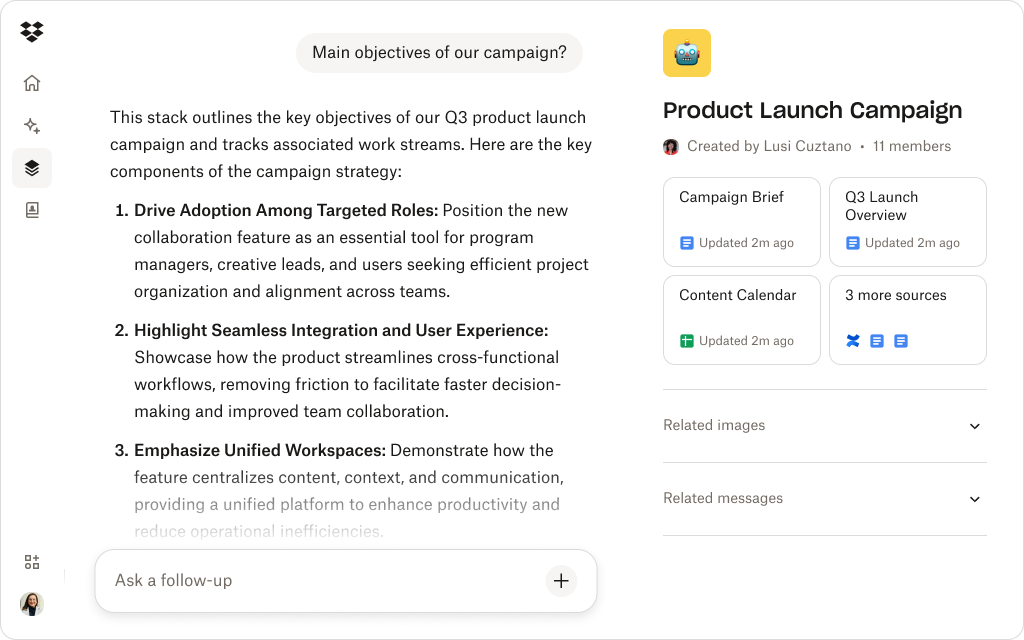
AI summaries can mislead if they omit nuance, skip details, or lose context.
We’ve all seen how quickly AI can turn pages of text into a few neat sentences—but faster doesn’t always mean better.
The goal of a good summary isn’t just to shorten—it’s to preserve meaning. When nuance, structure, or tone are lost, decisions based on those summaries can easily go astray.
When AI pushes to condense, it may strip subtle cues—humor, sarcasm, brand voice, or intent. What remains can feel hollow, disconnected, or even misleading.
For instance, a marketing update written with playful humor might be flattened into a dry, technical report. The original warmth or motivation is gone, and leadership could misread team morale or project energy. Tone shapes interpretation, and when AI ignores it, summaries can distort intent as much as they simplify it.
Before you hit “summarize,” it helps to understand what AI often misses. These four pitfalls show why good summaries depend as much on your approach as the tool itself.

1. Skipping critical data or sections
AI models sometimes assign lower importance to “background” or “appendix” content, assuming it’s not essential. The result? Missing quotes, data points, or caveats that matter to decision makers.
Imagine a financial report where the summary omits a key footnote clarifying that projections assume stable market conditions. Without that context, the summary may sound overly optimistic—leading readers to make decisions on incomplete information.
The smallest omission can change the entire meaning of the document.
2. Misinterpreting ambiguous phrasing
If a sentence can be read multiple ways, AI may pick the wrong one. Without clarification, the summary may invert meaning or imply things the source never intended.
A phrase like “The team could not finalize results due to lack of data” can mean either that the data wasn’t available or that analysis hasn’t finished yet. Human readers rely on surrounding context to infer which; AI may not.
This is how seemingly small misreads turn into large factual errors.
3. Ignoring document structure and headings
Headings and sections aren’t decoration—they’re the roadmap of an argument. When AI ignores them, the summary can jumble ideas, misorder arguments, or flatten hierarchies of importance.
For example, an executive memo may open with background context, move into key findings, and conclude with recommendations. A structure-agnostic summary might list those in random order, confusing readers about what’s context versus what’s action.
Preserving structure is key to preserving logic.
4. Trusting AI without verification
Even the strongest AI summaries are not perfect. Blind trust can lead to acting on flawed information. Always cross-check with the source before making decisions or sharing insights.
AI excels at surfacing key ideas but lacks judgment about stakes or consequences. A five-minute skim of the original can often reveal subtle contradictions or caveats that never made it into the summary.
Think of AI as a fast assistant—not a final authority.

How Dash delivers smarter, context-aware summaries
In business, accuracy isn’t optional. A single missing data point or misplaced phrase can affect compliance, credibility, or customer trust.
That’s why Dropbox Dash was built to summarize with context, not just content.
Dash mitigates common summarization pitfalls through features designed for clarity and reliability:
- Live file context: Summaries pull from the most recent, approved version in Dropbox—never outdated drafts
- Version history awareness: Dash understands revisions, so you’re never summarizing the wrong version
- Structured reading: The AI respects document hierarchy—headings, sections, formatting—to preserve meaning and flow
- Linked citations: Dash can reference the source text directly, so you can verify what matters most
- Built-in security: Everything stays within your Dropbox permission structure—no content leaks, no cross-project exposure
With Dash, summaries stay connected to the full picture—accurate, on-brand, and rooted in your team’s latest work. It’s not just faster summarization; it’s trustworthy understanding.
Summarize confidently with AI that knows your content
Dash pulls from your latest Dropbox files to create accurate, on-brand summaries.
Best practices for asking AI to summarize
AI performs best when you meet it halfway. The clearer your prompt, the more accurate—and meaningful—the result.
Here’s how to guide it:
- Set the stage. Tell AI the purpose, audience, and tone of your document. It helps prioritize what truly matters.
- Ask for layers. Request both an executive overview and a detailed version to capture nuance and hierarchy.
- Add guardrails. Specify what to include or exclude (“skip legal boilerplate,” “highlight recommendations”).
- Compare and calibrate. Always cross-check against the source before sharing or acting.
- Iterate with feedback. Treat summarization as collaboration. The more context you provide, the smarter the AI becomes.
By combining clear direction with Dash’s context-aware intelligence, your team can turn summaries into reliable decision tools—not risks.
Summarize smarter with Dropbox Dash
Good summaries don’t just shorten—they clarify, preserve intent, and guide action. With Dash, your summaries draw on the freshest document version, respect structure, and retain links to the source. That means less guesswork, fewer omissions, and more confidence in what you share.
See how Dash helps teams generate smarter, reliable summaries—contact sales or try a demo.
Frequently asked questions
Yes—especially with Dash. It structures and reads documents section by section, so context isn’t lost across long files. For complex reports, you can still run multiple summaries or review key sections, all linked back to your original content in Dropbox.
It can, especially when tone or phrasing is subtle. Dash helps reduce that risk by drawing from your latest Dropbox files, keeping summaries consistent with your brand voice. Still, a quick review by your team ensures tone stays authentic.
Absolutely. Dash was built for small, busy teams who want reliable AI without extra setup. You get faster summaries grounded in your real work—no training, no overhead, just clarity.
Get started with Dash
.webp)

.svg)


